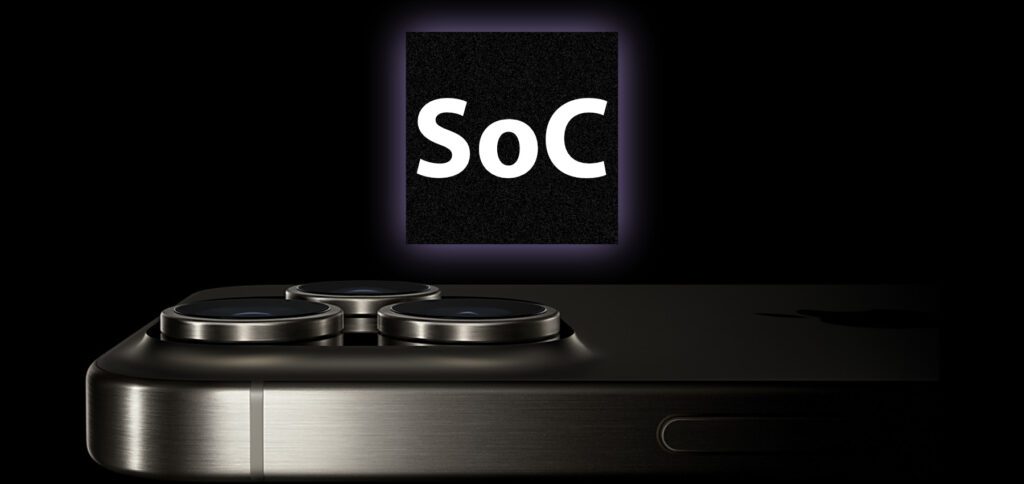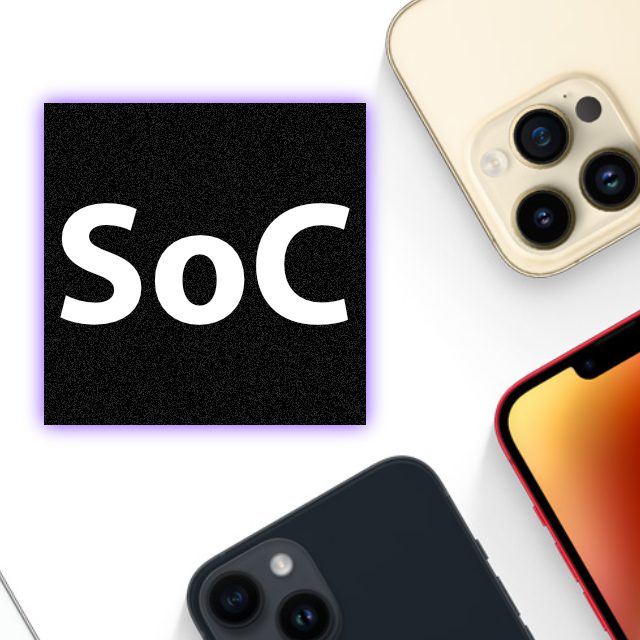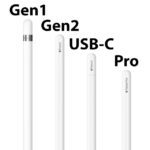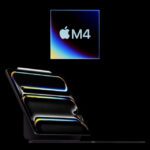Current Apple iPhones do not use a single CPU chip as the central processing unit, but rather a so-called system-on-a-chip (SoC). This also has a CPU unit, but has other elements on the same chip. For more recent iPhone models, for example: B. the graphics processor (GPU) included. There is also the Neural Engine, the Secure Enclave, areas for media processing and so on. But which iPhone has which SoC and in which generations was the chip system supported by external elements? You can find answers to these questions here. Below you will find all iPhone SoC names as well as CPU and GPU details from the first device from 2007.

Chapter in this post:
List: These SoC models and other chips are in the iPhone
Apple did not use its own SoC in the first iPhone models, but instead relied on Samsung technology. And even though the A chip known for the Apple iPhone was already used as the SoC, it still took a while before Apple implemented a GPU unit on it. Until then, graphics processors from PowerVR Technologies were used. In the following list you will find an overview of the SoC, CPU and GPU in the individual iPhone models.
| Device model | Year | SoC designation | Processor (CPU) | Graphics unit (GPU) |
| iPhone | 2007 | Samsung S5L8900 | 1176 ARM, 1 core, 412 MHz | PowerVR MBX Lite, 1 core, 60 MHz |
| iPhone 3G | 2008 | Samsung S5L8900 | 1176 ARM, 1 core, 412 MHz | PowerVR MBX Lite, 1 core, 60 MHz |
| iPhone 3GS | 2009 | Samsung Samsung S5L8920 | ARM Cortex A8, 1 core, 600 MHz | PowerVR SGX 535, 1 core, 150 MHz |
| iPhone 4 | 2010 | Apple A4 | ARM Cortex A8, 1 core, 800 MHz | PowerVR SGX 535, 1 core, 200 MHz |
| iPhone 4s | 2011 | Apple A5 | ARM Cortex A9, 2 cores, 800 MHz | PowerVR SGX 543MP2, 2 cores, 250 MHz each |
| iPhone 5 | 2012 | Apple A6 | Apple Swift (ARMv7s base), 2 cores, 1,3 GHz | PowerVR SGX 543MP3, 3 cores, 266 MHz each |
| iPhone 5c | 2013 | Apple A6 | Apple Swift (ARMv7s base), 2 cores, 1,3 GHz | PowerVR SGX 543MP3, 3 cores, 266 MHz each |
| iPhone 5s | 2013 | Apple A7 | Apple Cyclone (ARMv8s base), 2 cores, 1,3 GHz | PowerVR G6430, 4 cores, 300 MHz each |
| iPhone 6 Plus | 2014 | Apple A8 | Apple Typhoon (ARMv8-A base), 2 cores, 1,4 GHz | PowerVR GX6450, four cores, 450 MHz each |
| iPhone 6s (Plus) | 2015 | Apple A9 | Apple Twister (ARMv8-A base), 2 cores, 1,85 GHz | PowerVR GT7600, 6 cores |
| iPhone SE | 2016 | Apple A9 | Apple Twister (ARMv8-A base), 2 cores, 1,85 GHz | PowerVR GT7600, 6 cores |
| iPhone 7 Plus | 2016 | Apple 10 Fusion | 4 ARM-based cores: 2x Hurricane, 2x Zephyr, 2,34 GHz | PowerVR GT7600 Plus, 6 cores |
| iPhone 8 Plus | 2017 | Apple 11 Bionic | 6 ARM-based cores: 2x Monsoon, 4x Mistral, 2,38 GHz | integrated GPU, 3 cores |
| iPhone X | 2017 | Apple 11 Bionic | 6 ARM-based cores: 2x Monsoon, 4x Mistral, 2,38 GHz | integrated GPU, 3 cores |
| iPhone XR | 2018 | Apple 12 Bionic | 6 ARM-based cores: 2x Vortex, 4x Tempest, 2,49 GHz | integrated GPU, 4 cores |
| iPhone XS (Max) | 2018 | Apple 12 Bionic | 6 ARM-based cores: 2x Vortex, 4x Tempest, 2,49 GHz | integrated GPU, 4 cores |
| iPhone 11 Plus | 2019 | Apple 13 Bionic | 6 ARM-based cores: 2x Lightning, 4x Thunder, 2,65 GHz | integrated GPU, 4 cores |
| iPhone 11 Pro (Max) | 2019 | Apple 13 Bionic | 6 ARM-based cores: 2x Lightning, 4x Thunder, 2,65 GHz | integrated GPU, 4 cores |
| iPhone SE (2nd gen) | 2020 | Apple 13 Bionic | 6 ARM-based cores: 2x Lightning, 4x Thunder, 2,65 GHz | integrated GPU, 4 cores |
| iPhone 12 (mini) | 2020 | Apple 14 Bionic | 6 ARM-based cores: 2x Firestorm, 4x Icestorm, 3,0 GHz | integrated GPU, 4 cores |
| iPhone 12 Pro (Max) | 2020 | Apple 14 Bionic | 6 ARM-based cores: 2x Firestorm, 4x Icestorm, 3,0 GHz | integrated GPU, 4 cores |
| iPhone 13 (mini) | 2021 | Apple 15 Bionic | 6 ARM-based cores: 2x Avalanche, 4x Blizzard, 3,23 GHz | integrated GPU, 4 cores |
| iPhone 13 Pro (Max) | 2021 | Apple 15 Bionic | 6 ARM-based cores: 2x Avalanche, 4x Blizzard, 3,23 GHz | integrated GPU, 5 cores |
| iPhone SE (3nd gen) | 2022 | Apple 15 Bionic | 6 ARM-based cores: 2x Avalanche, 4x Blizzard, 3,23 GHz | integrated GPU, 4 cores |
| iPhone 14 Plus | 2022 | Apple 15 Bionic | 6 ARM-based cores: 2x Avalanche, 4x Blizzard, 3,23 GHz | integrated GPU, 5 cores |
| iPhone 14 Pro (Max) | 2022 | Apple 16 Bionic | 6 ARM-based cores: 2x Everest, 4x Sawtooth, 3,46 GHz | integrated GPU, 5 cores |
| iPhone 15 Plus | 2023 | Apple 16 Bionic | 6 ARM-based cores: 2x Everest, 4x Sawtooth, 3,46 GHz | integrated GPU, 5 cores |
| iPhone 15 Pro (Max) | 2023 | Apple 17 Bionic | ARM based, 6 cores, 3,78 GHz | integrated GPU, 6 cores |
Information provided without guarantee; Typos possible
Further information about iPhone hardware from Sir Apfelot
Here in the blog you will find numerous other articles and lists about the hardware in the individual models of the Apple iPhone. In addition to the individual articles that appear shortly after the launch of the new iPhones and only show the corresponding year, you can also take a look at these collection lists:
- RAM list: This is how much RAM the iPhone has (all generations)
- Apple iPhone battery capacity (mAh) of all models
Even more details about the iPhone SoC
In the table above you will find a lot of information about the individual system chips that are used in the respective iPhone. The information about the year is intended to make the assignment easier for you. I have also listed the number and names of the performance cores (2 each) and the efficiency cores (2 or 4 each). Details on the division of the CPU cores can be found here: Simply explained – high-efficiency cores vs. high-performance cores in Apple Silicon chips. You can find even more details about the individual chips on Wikipedia. The English-language pages on the A chips in particular offer nm information, transistor quantity, cache size, comparisons and more. Here's an example: A16 Bionic at Wikipedia.
My tips & tricks about technology & Apple
Related Articles
After graduating from high school, Johannes completed an apprenticeship as a business assistant specializing in foreign languages. But then he decided to research and write, which resulted in his independence. For several years he has been working for Sir Apfelot, among others. His articles include product introductions, news, manuals, video games, consoles, and more. He follows Apple keynotes live via stream.









